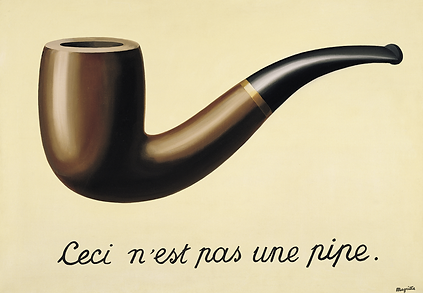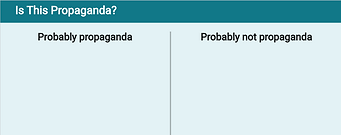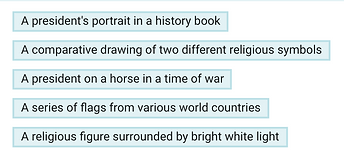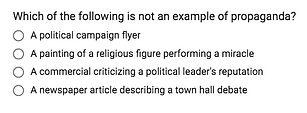
Ceramics 1
Ceramics 1
Unity-Principle of Design
Unity-Principle of Design
Unity-Principle of Design
Unity-Principle of Design
Unity-Principle of Design
Unity-Principle of Design

Lines are everywhere. You can see lines in the grain of a piece of wood or in the cracks on a sidewalk.
In art, Line is an element of art that is the path of a moving point through space.
Lines are used to:
-
Create boundaries between shapes
-
Create boundaries between colors, textures or values
-
Lead the eye from one space to another
-
Create textures
-
Suggest emotional qualities
Lines are everywhere. You can see lines in the grain of a piece of wood or in the cracks on a sidewalk.
In art, Line is an element of art that is the path of a moving point through space.
Lines are used to:
-
Create boundaries between shapes
-
Create boundaries between colors, textures or values
-
Lead the eye from one space to another
-
Create textures
-
Suggest emotional qualities
Classwork & assignments
Grid drawing is a very old technique of transferring images (from sketches to a full size canvas or fresco, etc...)
Always make sure that the number of squares on the original picture and your working area are exactly the same (even if the size of the squares are bigger on the paper). This is because no matter how many times bigger (or smaller) you make the drawing, the proportions and dimensions can only stay the same if the number of boxes (squares) matches exactly.
Make sure you follow all steps below.
2.3.2 The Van Eycks and Rogier van der Weyden

1.2.1 What Is Realism?
What Is Realism?
Throughout the ages, artists have tried to reproduce life in a faithful manner. Realistic painting transcends culture, race, religion, and time.
But what is real? This question has been debated for quite some time, and the answer keeps changing. Keep going to get in on the argument.

Complete the questions on your study guide as you work through this activity. Reviewing your notes before quizzes and tests will help you succeed.
They're both painted realistically, but who looks more real to you?
This Is Not Real
Some people argue that realistic art does not exist. After all, even art that is supposed to look real is just an imitation of reality.
On the other hand, the term realistic can be applied to almost anything. All artwork is the artist's perception of the world. Who can say with certainty what is more real than something else?
Take a look at this reproduction of Ceci n'est pas une pipe. What do you think? Is this a pipe or not?
Surrealist painter René Magritte famously painted a pipe and then wrote under it: Ceci n'est pas une pipe ("This is not a pipe.").
Magritte's pipe is not real, but rather a picture of one. According to Magritte, all paintings are illusions, no matter how real they may seem.
Philosophical questions aside, realistic art, in the true sense of the word, rejects imaginary or fantastical images. It is painted realistically with the goal of lifelike representation.

Take a look at this reproduction of Ceci n'est pas une pipe. What do you think? Is this a pipe or not?

The Surrender of Breda, 1634 – 1635 by Diego Velázquez. It depicts a transfer of the key to the city from the Dutch to the Spanish army during the Siege of Breda. This is an important moment in the history of the Spanish empire.
Painting History
So, why might artists historically have tried to create realistic art?
Before photographs existed, paintings were historical documents, functioning in the same way that photos and videos do today. We know a lot about the people and cultures throughout history because we can see it in their art.
If some of these paintings had not been as realistic and detailed as they are, they would not have served as good historical documents. They also wouldn't have filled future generations in on what life was like back then.
The most common subjects of historical paintings were important historical events, such as a battle or the signing of a treaty. Painters were also responsible for painting portraits of rich and important people, such as the king and queen. These paintings tell us a great deal about these people and events and how they were remembered.
Painting as Propaganda
As you just learned, before photography, art that was designed to record something or someone important was painted realistically. However, there is another kind of historical art that did not focus on realism: propaganda.
Art is filled with political, moral, and religious messages. When these messages are the primary reason or goal of a work of art, it is propaganda. So, all those paintings commissioned by the church in the Middle Ages and the Renaissance can be considered religious propaganda.
Propaganda uses a lot of symbols. For example, the eagle is used to symbolize the United States and all of its ideals: life, liberty, and the pursuit of happiness. When an eagle appears in a work of art, especially one done by an American artist, it quickly conveys these ideas to the viewer.

A World War II propaganda poster created by artist Weimer Pursell in 1943
Examples in Context
A World War II propaganda poster created by artist Weimer Pursell in 1943
Propaganda is always found during periods of war. Some of the most famous examples are from World War II. All the countries involved, especially the United States and Nazi Germany, had numerous propaganda-based artworks created.
This propaganda, usually in the form of posters displayed in public places, used strong language and even stronger images to appeal to the fear, hatred, and loyalty of the citizens viewing them.
Consider the poster above. The message is, "Save gas so the troops can use it." But how would the impact of the message have changed if the poster's creator had just said that instead of making the viewer feel guilty about supporting Hitler's Nazi regime?
The most important goal is to appeal to the viewer's emotions. So, propaganda is often painted unrealistically. For example, wartime propaganda usually makes the "good" guys look tall and strong and trustworthy, while making the "bad" guys look ugly and evil.
Real Realism
It's one thing to create art that looks real. But what if the scene itself is not realistic? Then what?
True realism has to do with an artist's subject matter. Until the early 19th century, most painters made glorified portraits of rich people or scenes from religion or myths. Although this art was visually realistic, it did not show the lives most people led.
The Wrestlers, Gustave Courbet (1853). Can you feel each wrestler straining and struggling? Such stark realism would not have been acceptable 50 years earlier.
That all changed with the Industrial Revolution, a worldwide shift to machine-created goods. In the United States, it started around 1820.
As more and more people moved from the country to the cities to take factory jobs, the working conditions became so bad that the upper classes and politicians could no longer ignore them.
Some famous people, mostly artists and writers, began to take up the cause of the poor working class.
It was at this time that the French painter Gustave Courbet, moved by the working-class struggle, introduced a school of painting called Realism. Courbet wanted to truthfully show life's harsh realities

The Wrestlers, Gustave Courbet (1853). Can you feel each wrestler straining and struggling? Such stark realism would not have been acceptable 50 years earlier.

New York Restaurant, painted by Edward Hopper in 1922, is quite different from the Realism work that Courbet did.
Realism Continues to Change
New York Restaurant, painted by Edward Hopper in 1922, is quite different from the Realism work that Courbet did.
Courbet believed that a realistic work of art was not one arranged by the artist to make the scene appear more picturesque. He encouraged artists to leave the studio and paint outdoors from direct observation.
Although Realism focused on accurately and objectively representing the real lives of the working class, many artists incorporated the old styles of painting as well.
Emotion could not be fully abandoned to scientific observation, so that many Realism-inspired canvases are actually a blend of the new with the old styles.
Over the years, Realism evolved into a variety of different styles. You will learn more about the school of Realism in a later unit. For now, if you want to learn more, check out the link below.
Photorealism
What do you think is more realistic: a photograph or a painting?
Most people will say that photographs are more real, and most of the time, they would be right. But the goal of creating realistic art did not end with photography. Photography simply helped change how realistic art is achieved.
Merging Photos and Paint
In the 1960s, Photorealism took Realism to new heights. This movement was inspired by photography's increased popularity once cameras were cheap enough for most people to buy. Some people argued that photography would replace painting.
That's where the Photorealists came in. They took the camera and made it an artist's tool, not a replacement. This group of painters created sharply focused, true-to-life paintings based on photographs. A lot of the time it's hard to believe these paintings aren't photographs themselves.
Even though the movement was most popular in the 1960s and 1970s, artists still use the technique today.

Check out Chuck Close's 1978 work "Mark," which is so detailed it could easily be mistaken for a photograph.

Read this interview with Ralph Goings, a longtime Photorealist. In it, he compares photographs and paintings based on them by saying it's "the difference between a musical manuscript (a work of art) and the performance (also a work of art)."
Tiled Lunch Counter 1979
Size: 48 x 64 in
Medium: Oil on canvas
In Review
Before moving on, review what you have learned in the study. Go over the notes you wrote on the study sheet. Ask your teacher any questions you might have.
If you have not filled out your study sheet, do it now before moving on to the next activity.
Study sheets are a very useful tool to help you study for quizzes and tests.
What Did You Learn?
-
Art is always just a representation of reality. It is never reality itself.
-
Realistic art emphasizes lifelike representations, rejecting imaginary and fantastical subjects.
-
Realistic images can be used to provide a record of historical events or to show future generations what life was like during a certain time.
-
Propaganda is a type of historical art that is not realistic, but rather exaggerated to send a specific message.
-
The Realism that emerged in the early 19th century was meant to show the harsh realities of life, as opposed to glorified mythological or biblical events.
-
The invention and popularity of the camera provided artists with another tool to create even more realistic images.










